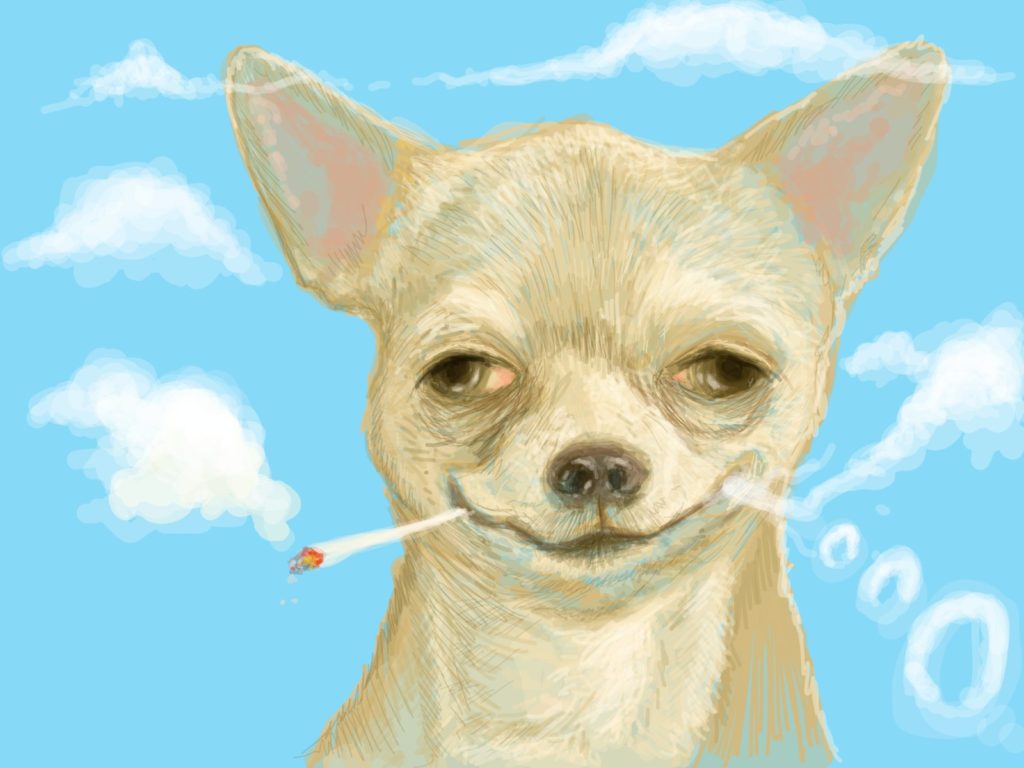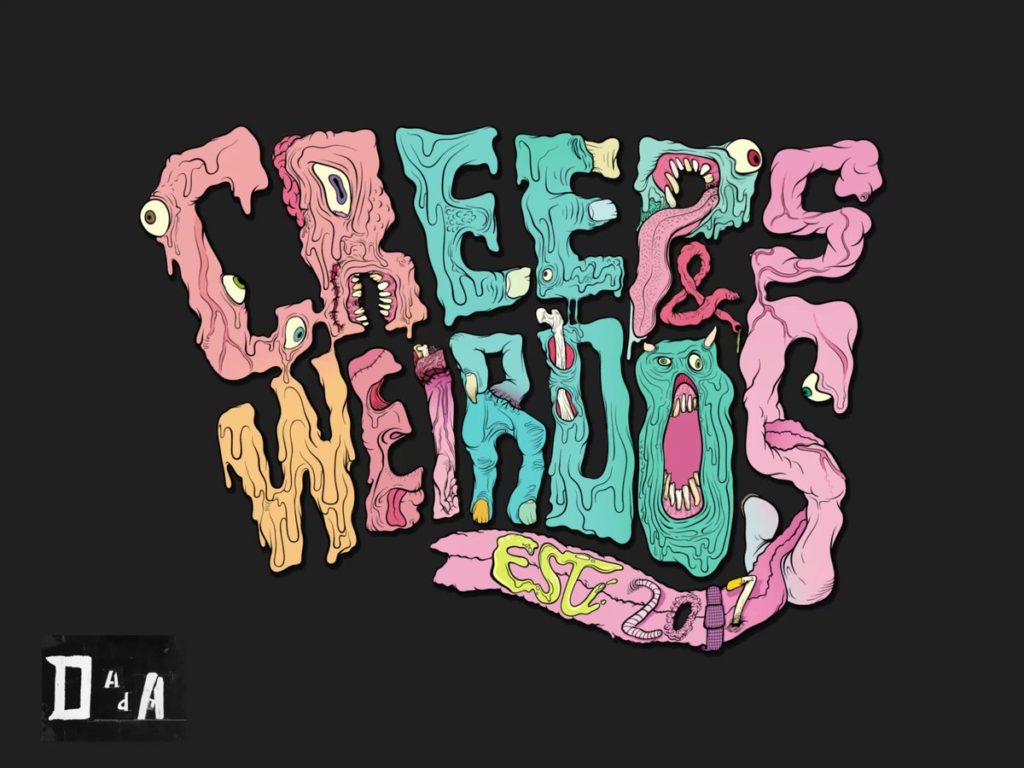Only in the blockchain universe is something that happened four years ago considered part of prehistory. But in the NFT world, we are living on blockchain time. This means that the Creeps & Weirdos, the funky collection entitled DADA issued in October 2017, is considered a historical, even prehistorical artifact. And the Creeps happen to have quite an interesting story.
In prehistoric times, DADA, a collaborative art platform where people spoke to each other through drawings, first implemented blockchain smart contracts on a curated collection of 108 different drawings with a supply of 16,600 digital prints. The Creeps & Weirdos project was inspired by the Rare Pepes and the Cryptopunks, which had just been launched a couple of months before.
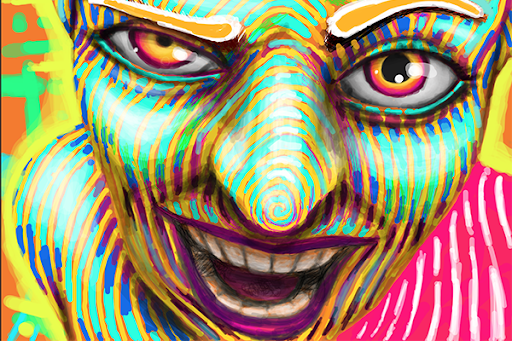
The artworks were created on our drawing platform by 30 artists. We got the inspiration from the Rare Pepes for the “dank” style that early collectors liked. They were primarily developers, people with crypto to burn, and early adopters excited to spend their ETH on an actual use case. From the Cryptopunks, we adapted their collectible structure with different levels of scarcity and created a decentralized marketplace for rare digital art made by artists on Ethereum. “Rare art” is what we used to call NFTs in those days.
It was so early that you could reach out to the most prominent experts in blockchain art at the time, and they would not only answer immediately but compare notes and learn from each other because everything was NEW.
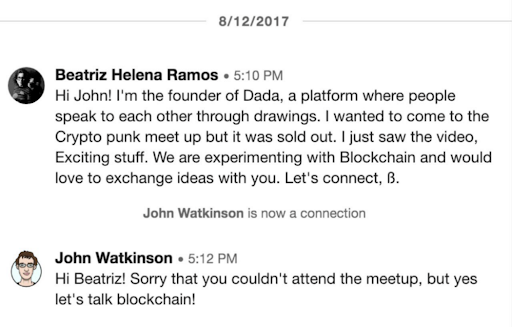
Matt and John from Larva Labs generously allowed us to modify the Cryptopunks smart contract. We did this by coding royalties into the smart contracts on-chain for the first time in NFT history. Thus, a hybrid of art and collectibles was born. C&W were not trading cards, memes, avatars, or a game. They were actual art, digitally handmade by artists on our platform, and they paved the way for all the current crypto art marketplaces. We have seen all of them blossom since.
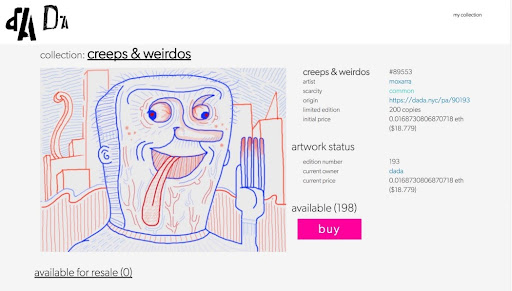
But back then, it was by no means a crowded space. There were only a handful of platforms investigating rare digital art, and the most pressing question we were asked was whether people could hang the art on their walls. Why, I wondered, is everyone perfectly okay with reading books, watching movies, listening to music, let alone sharing every detail of their lives digitally. Still, they can’t get over rare digital art?
The few artists, technologists, and early collectors who saw the revolutionary possibilities of blockchain for art and artists used to meet and pump each other up. This is precisely what happened at Rare Art Festival in January 2018, an event that was a significant milestone in the history of NFTs, and which included early platforms and projects like Cryptopunks, Cryptokitties, DADA, Cryptoartsy, Rare Pepes, Rare Art Labs, and Spells of Genesis.

It was an electric time. The C&W collection was featured in Artnome’s article The Blockchain Art Market is Here. Things moved fast. We were invited to speak at Christie’s (which was not quite ready for prime time yet), MIT, NYU, SXSW, and countless meetups and panels. Meanwhile, we were trying to onboard our artists to crypto wallets and convince people that rare digital art was a revolution in the making. Meanwhile, at the Rare AF 1, the first-ever live auction of rare digital art saw the Homer Pepe sell for $39,000.
Everything was coming up roses until Bitcoin crashed the following year. At the 2018 Ethereal Summit, the market was bullish, and the art auction had commanded high prices. The onset of the Crypto Winter was a different story. The 2019 Ethereal Summit auction was one of the saddest affairs I’ve ever attended. All that cash-rich enthusiasm had evaporated. That’s when DADA decided to upgrade the C&W smart contract into the then-new ERC721 standard and cut the original supply of C&W in half to 8,300 prints. We paused the 2017 contract, airdropped new ERC721 Weirdos to every 2017 collector, and retired the original collection. To give you an idea of the kind of blues that set in, only three C&W collectors purchased these 2019 tokens at the time. And one of them was us.
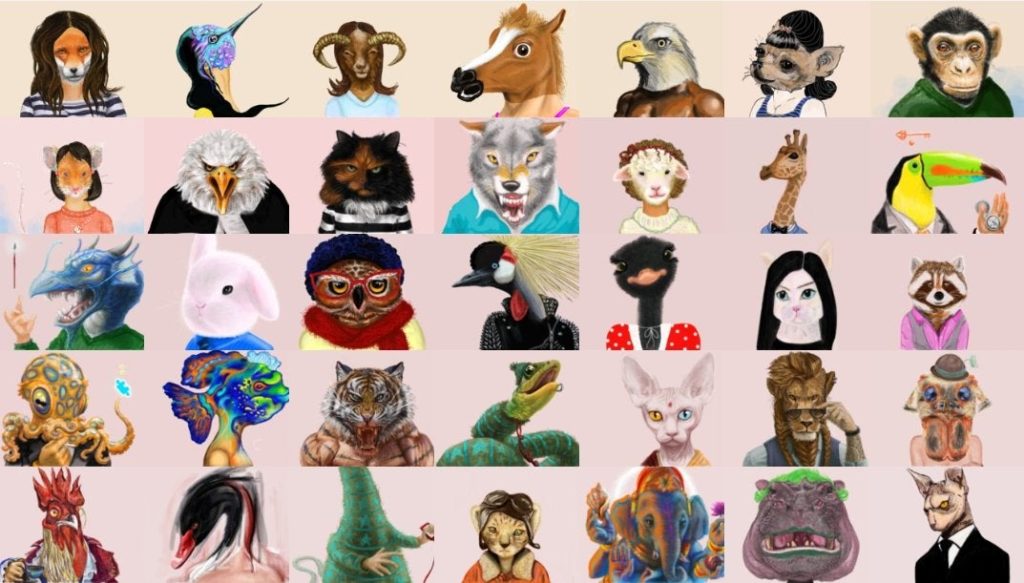
In the intervening years, the Creeps & Weirdos were dormant in their vault, getting ready for their planned comeback. Finally, in the Spring of 2021, the world seemed to have caught up to NFTs. We were planning on reissuing the collection, but NFT “archaeologists” dug it up from an ancient hidden link that wasn’t public and beat us to the punch, buying the Weirdos in the event that we call ”the Apestorm.” Alas, collectors found out that these historic NFTs could not be traded on secondary markets because of the lack of royalty standards on Ethereum. So we spent five months looking into our contracts, searching for ways to unlock our NFTs while preserving their provenance and reuniting two tokens that were diverging with every over-the-counter sale. We realized that the most direct link to the pieces’ provenance was the historic 2017 ERC20 contract. Unpausing it meant that to indeed keep it as one collection, we would have to burn the 2019 contract. We did not want to do that: each of them had its own historical importance and its own quirks, not to mention that the 2019 contract includes other collections as well. Each one represented a different moment in time, a landscape, and a wealth of experience. We decided to honour the history behind this collection with all its experiments, adventures, and discoveries and preserve both as a record of the development of DADA and crypto art as a whole.
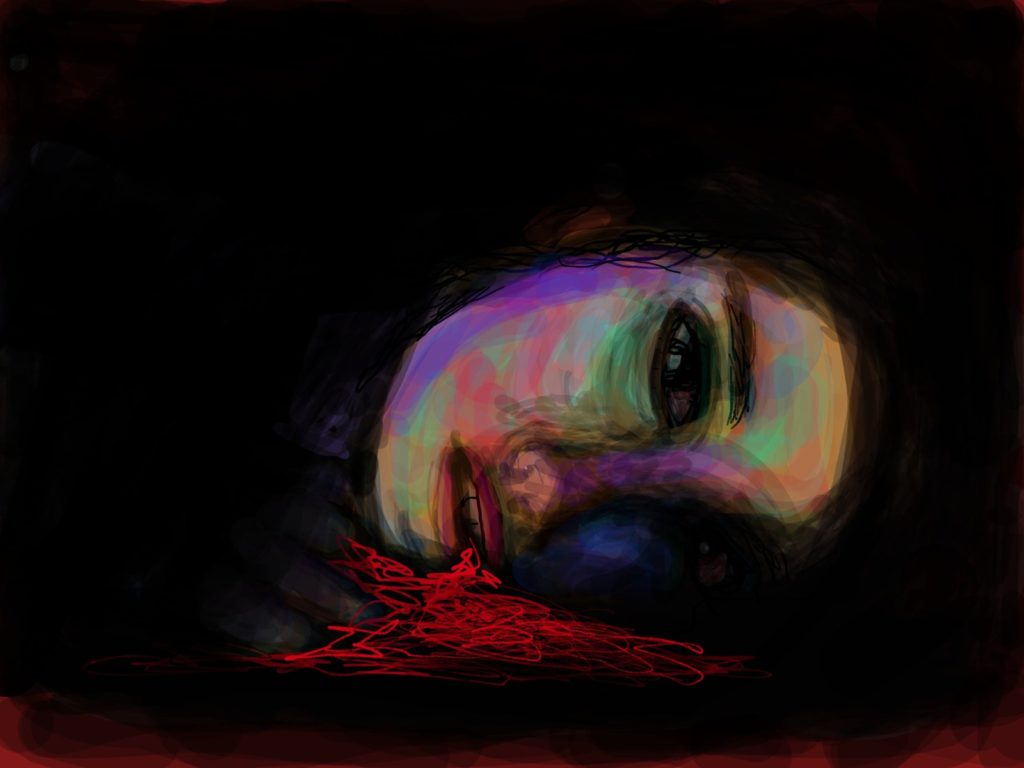
Much like fine wine vintages, and unlike any other NFT collection on the planet, the Creeps & Weirdos is one collection that has two editions with two historic smart contracts; that is, the same art in two different tokens, ERC20 Creeps or ERC721 Weirdos, with their different characteristics, stories, and nuances.
DADA has been around since 2012. We adopted the blockchain in 2017 because we knew it was the way to turbocharge our commitment to putting an end to the myth of the starving artist. Since retiring the Creeps & Weirdos collection in 2019, we have been exploring possibilities beyond the markets into the emerging field of token economics. In June of 2020, we presented our white paper, The Invisible Economy, at the RadicalxChange conference. We keep looking ahead.
The return of the C&W marks the beginning of a new era in which 100% of the revenues will go to the DADA Fund and get distributed to contributing community members in the form of basic income. We also intend to expand our marketplace to the 2019 Weirdos and the other collections we have on that 721ERC contract in a brand new marketplace on Palm.
The past was awesome, the present is bright, and the future is brighter.
Judy Mam is a writer and one of the cofounders of DADA.
DADA.art
A collaborative art platform where people worldwide speak through drawings. Building a blockchain token economy for the arts.
Thanks to Lenara Verle and Sparrow Read.
